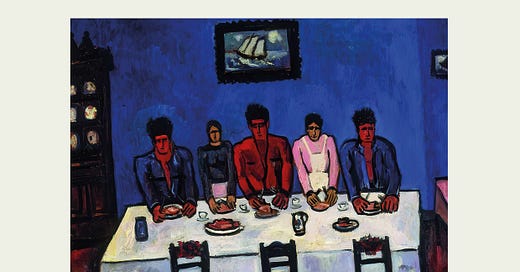Arctic Cities
For the Cossacks, Siberia was the future – either in pelts or timber –
as the Empire stepped East leaving tracks of bloody footprints
to the Vladivostok coast. Flung outpost of eaves and weatherboards,
dripping steadily from mid-April to unfathomable June,
here exile was largely character-building – with stoves, rye loaves,
foraging, the consolations of saxifrage and plug tobacco.
Summer, when it came, brief but extravagant, spiked the mind
like amphetamine. A child’s voice calling through pines.
Stalin started a clock. To achieve the impossible – such as landing
two men on the moon – set a timeframe. Five years, exactly,
for the electrification of the whole country. The pistol crack.
From Rostov and Leningrad, Kaluga, Tver, in open-topped trains
that rolled for days past abandoned villages, revved-up youth decamped.
Teenagers built power stations. As if magicked out of permafrost,
fantastical cities sprang up along the 69th parallel – Magadan,
Igarka, Norilsk – where the Palace of Sport and the Palace of Culture
stared each other down across municipal squares
thousands of miles from anywhere. Forged by the disappeared,
whose bones packed out foundations, buildings rose high and straight
in cheery colour combinations – yellow and ochre, baby blue and pink –
doomed to blacken soon in soot from smoke-stacks
arranged around each town like satellites. Red Plenty underfoot:
in branching seams stuffed deep in the Earth’s crust, gold, diamonds,
nickel, palladium, coal, sargassos of gas and oil
inspired Stakhanovite extraction quotas citizens in ushankas
and mittens fat as baseball catchers trudged in to meet.
Heating pipes grumbled, but obliged. There was snow and snow.
Cold and cold. Andromeda spun on its ever-narrowing axle,
a mistake in the firmament where the scissors slipped, poking out
too much. Girls left versions of themselves behind
as they walked to school – hoops you could pass your hand through,
where breath and winter and windlessness met.
Now, sure as frostbite, digit by digit, peripheral districts first,
cities atrophy. Bus-stops fly apart in storms or weather into crucifixes.
Inside derelict apartment blocks, a stiff Lady Dowager in baroque
headgear mounts each whitening staircase, encrusting with her touch.
Clocks grow tentacles. Come early spring – unfolding earlier
year on year – sinkholes offer lessons in spectacular collapse
as ice-roads turn impassible. There is rain and rain. Slush and slush.
Car graveyards. Anthrax. Hydrofluorocarbon stars.
If you are engaged by what you read on our free Substack, do consider subscribing to the magazine. Like all independent literary magazines, PN Review relies on paid subscribers to survive. Subscribers have access to our entire fifty year archive, plus six new issues per year, in print and digital form.
This poem by Sinéad Morrissey is taken from PN Review 283, May - June 2025. You can get your copy of this recent special issue, themed around writing and living between languages, here. Further contributions from Morrissey are available in the archive to paying subscribers, as well as more poetry, features, reviews and reports from across the back catalogue.
If you are interested in the work that we publish on this Substack, subscribe to the Carcanet newsletter, where we share articles by our authors, translators and editors about upcoming books.





